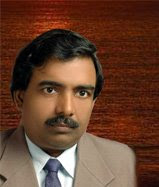1. Dimethyl glyoxime forms a square planar complex with Ni2+. This complex should be
a.diamagnetic b.paramagnetic having 1 unpaired electron
c.paramagnetic having 2 unpaired electrons d.ferromagnetic.
2.The least stable metal carbonyl as per the bonding considerations should be
a.Cr(CO)6 b.Mn(CO)6 c.Fe(CO)5 d.Ni(CO)43.Platinum metal (Pt) dissolves in aqua-regia but not in concentrated HCl or HNO3 because
a.HCl oxidizes Pt in the presence of HNO3
b.HNO3 reacts with HCl to form chlorine which attacks Pt
c.HNO3 oxidizes Pt which is followed by formation of a chloro complex
d.HCl and HNO3 together give O2 that oxidizes Pt
4.A coordination complex of type MX2Y2 [M = metal ion; X,Y = monodentate ligands], can have either a tetrahedral or a square planar geometry. The maximum number of possible isomers in these two cases are respectively a.1 and 2 b.2 and 1 c.1 and 3 d.3 and 2 5..When H2S is passed through a solution containing Cu2+, Cd2+ and an excess of cyanide ions, cadmium sulphide precipitates while copper ions remain in solution. This is because
a.Cu2+ forms a stable complex with cyanide while Cd2+ does not
b.Cu2+ forms a more stable complex with cyanide than Cd2+
c.Cu2+ does not form a sulphide
d.both CdS and CuS are formed, but CuS is soluble
6.
Milk of magnesia used as a medicine for treating indigestion is a substance that a.helps in disintegration of food products leading to their facile metabolism
b.combines with gastric hydrochloric acid thereby enhancing the latter’s efficiency
c.improves the enzymatic activities inside the stomach
d.neutralizes excess acidity, providing a buffered medium inside the stomach
7.In nature, ammonia is synthesized by nitrifying bacteria using enzymes while in industry it is manufactured from N2 and H2 using iron oxide catalyst at 5500C. Under the same industrial conditions, enzymes cannot be used because
a.enzymes get deactivated at high temperature
b.enzymes catalyze reactions only in living systems
c.the reaction becomes vigorous and uncontrollable
d.the enzymes use nitrates in place of N2
8.The molar conductivities of H+, Li+ and Na+ ions in aqueous solutions at infinite dilution are in the order
a.H+ > Li+ > Na+ b.H+ <>+ <>+ c.H+ > Na+ > Li+ d.Na+ > H+ > Li+
9..Aluminium oxide exists in nature as gems with different colours. The reason for the difference in colour is that
a.the oxidation states of aluminium in these gems are different
b.the extent of crystallinity in these gems is different
c.the Al-O bonding is different in these gem structures
d.there are different transition metal ions present as impurities in these gems
10.There is a mixture of Cu (II) chloride and Fe(II) sulphate. The best way to separate the metal ions from this mixture in qualitative analysis is by treating it with
a.hydrogen sulphide in mild acidic medium, where only Cu (II) sulphide will be precipitated
b.ammonium hydroxide buffer, where only Fe(II) hydroxide will be precipitated
c.hydrogen sulphide in mild acidic medium, where only Fe(II) sulphide will be precipitated
d.ammonium hydroxide buffer, where only Cu (II) hydroxide will be precipitated

